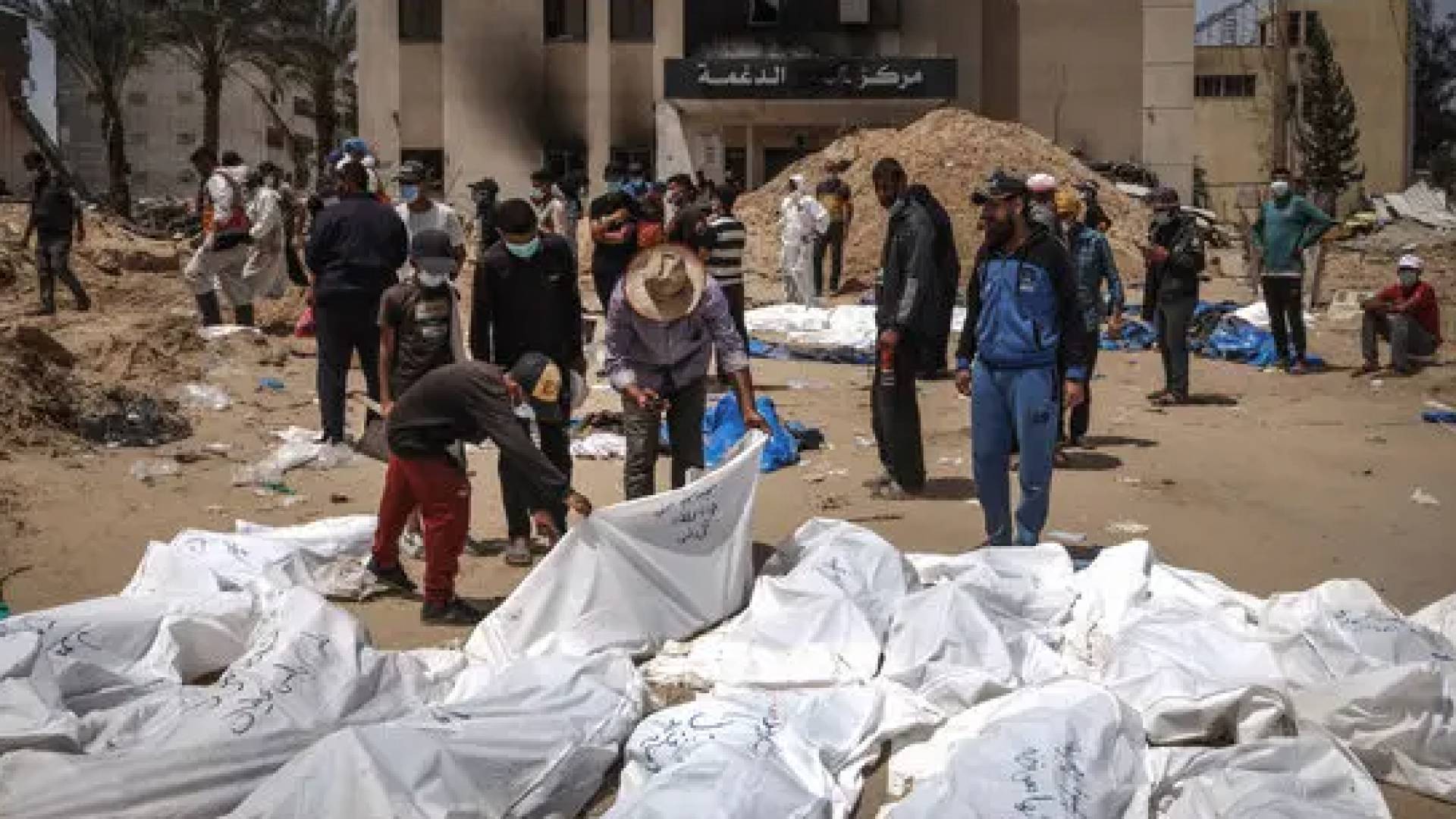"Identification failed": Gaza moves to bury 38 unidentified dead
Note: AI technology was used to generate this article’s audio.
The Ministry of Health in Gaza announced Monday a decision to bury 38 Palestinians whose bodies, previously held by 'Israeli' forces, could not be identified despite exhaustive efforts.
This is part of a larger, recurring tragedy in the Gaza Strip, where hundreds of bodies returned by 'Israel' have been laid to rest in mass graves after authorities were unable to confirm their identities.
The decision, the ministry stated, was made as a last resort.
Here is a detailed breakdown of the circumstances, the challenges to identification, and the international response.
The Challenge: Why Bodies Cannot Be Identified
The primary reason cited by Gaza's Ministry of Health for the burials is the inability to identify the deceased. This challenge stems from several critical factors:
- Condition of the Remains: Health officials in Gaza, including the Palestinian Center for Human Rights (PCHR) and the Government Media Office, have repeatedly stressed that bodies returned by 'Israel' are often in an advanced state of decomposition, mutilated, or show signs of torture. This severe degradation of the remains makes visual identification by family members, which is often the only method available, impossible.
- Lack of Forensic Capacity: The 'Israeli' aggression on Gaza has decimated Gaza's medical infrastructure. Hospitals lack the basic equipment, forensic experts, and, most critically, the DNA testing capabilities required for a formal identification process. Without forensic laboratories, authorities cannot match the remains to the thousands of families searching for missing relatives.
- Missing Documentation: The groups of bodies are transferred without any accompanying documentation or information from 'Israeli' authorities regarding their identities or the circumstances of their deaths. The International Committee of the Red Cross (ICRC), which often facilitates these transfers, has in some instances reportedly declined to participate when transfers lack the necessary protocols and data.
Read more: 54 unidentified Palestinians buried in mass grave in Deir al-Balah
The Process: A Recurring Necessity
The burial of these 38 individuals follows a pattern seen multiple times in recent months. 'Israel' has returned hundreds of bodies to Gaza in batches of varying sizes.
- Temporary Preservation: Upon reception at hospitals like the Nasser Medical Complex in Khan Younis, medical teams attempt to document the remains.
- Attempted Identification: Efforts are made to allow families of the missing to view the bodies or photographs, a process that is both extremely traumatizing and largely unsuccessful due to the condition of the remains.
- Mass Burial: After all available identification efforts are exhausted, the Ministry of Health, in coordination with other municipal bodies, proceeds with a collective burial. The unidentified are buried in numbered graves in designated mass burial sites, such as those in Deir al-Balah, in the hope that they may one day be identified if forensic capabilities are restored.
Read more: Palestinian child killed in Gaza by unexploded 'Israeli' munitions
International Outcry and Calls for Investigation
The condition of the returned bodies and the discovery of mass graves at medical facilities like Al-Shifa and Nasser Hospital have drawn widespread international condemnation.
- United Nations: The UN High Commissioner for Human Rights, Volker Türk, has repeatedly expressed horror at the reports and called for "clear, transparent, and credible investigations" into the deaths and potential war crimes.
- European Union: The EU has echoed these calls, stating that the circumstances surrounding the mass graves create an "impression that there might have been violations of international human rights" and that an independent investigation is necessary.
- Human Rights Organizations: Groups like Amnesty International and the PCHR have called for immediate access for independent human rights investigators and forensic experts to preserve evidence and properly identify the dead, emphasizing that failure to do so is a violation of international humanitarian law, which obliges parties in a conflict to respect and protect the dignity of the deceased.




